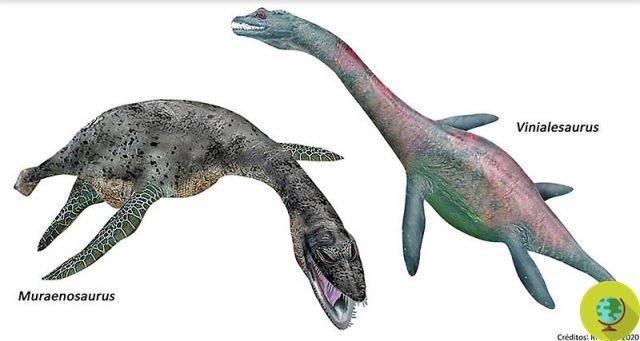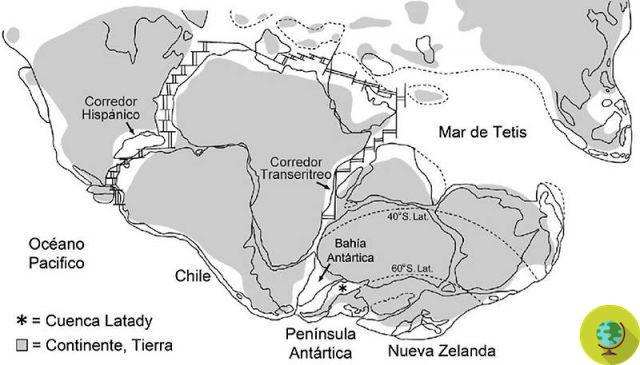160 million years ago, Chile was also home to two species of plesiosaurus, two marine reptiles, among the oldest ever discovered
160 million years ago, Chile was also home to two species of plesiosaurus, two marine reptiles, among the oldest ever discovered. The finds, unearthed by a research group led by the University of Chile, were found near the city of Calama.
Researchers have identified the earliest genera of Jurassic period plesiosaurs found in the country. One of these is a Vinialesaurus, a marine reptile of about four meters of which only a precedent had been recorded in the Caribbean, the other a Muraenosaurus, about six meters long, from which the second and most complete fossil in South America was obtained. .
Read also: Discovered one of the most "extravagant" dinosaurs ever, completely different from any other known to date
A exceptional discovery: The first Jurassic period plesiosaur vertebra found in Chile dates back to 1861 and in the 70s, palentologists demonstrated that plesiosaurs were common Jurassic animals in the north of the country. But, despite this reconstruction work, they had never been there to date precise and incontrovertible identifications of these marine reptiles, nor clues to their possible relationships with Jurassic animals found in other parts of the world.
This study, in particular, established that the Muraenosaurus and Vinialesaurus remains found belong to the Oxfordian, a geological age of the Jurassic period ranging from 163 to 157 million years ago.
With skulls of about 30 cm, these ancient animals feature somewhat cylindrical neck vertebrae, sturdy bodies and moderately long fins. They were marine reptiles of variable size but, while the Muraenosaurus reached a length of six meters, the Vinialesaurus could reach "only" about four meters.
Furthermore, Muraenosaurus is a well-known species in the Middle European Jurassic, but with few examples found in the southern hemisphere (Only a fragmentary find of this kind was known in the southern hemisphere, discovered in Argentina.
The identification of the Vinialesaurus, on the other hand, represents the second example in the world and the first in the southern hemisphere. Prior to this research, the presence of the species was known only in the Oxfordian of Cuba.

© University of Chile
"The new specimens [of Vinialesaurus] found in Chile - explains Rodrigo Otero, first author of the work - correspond to more complete remains, which allow to reaffirm the southern distribution of this genus, extending its presence also to the Oxfordian".
And not just a curiosity. The discovery represents in fact a new and comforting proof of a connection between the marine fauna of the North Atlantic and that of the southern hemisphere during the Upper Jurassic (Oxfordian), when part of the Chilean territory was submerged by the sea and South America still included Gondwana.
This connection would have occurred through the so-called 'Caribbean Corridor', also known as the 'Hispanic Corridor', which would have allowed the flow of ocean animals from the Sea of Thetis (today's North Atlantic) to the former Pacific Ocean.

© University of Chile
"The recent discoveries of plesiosaurs are added to those in Europe and the precedents in the Caribbean - concludes Otero - reinforcing the idea of this fully functional marine corridor during the Middle and Upper Jurassic ".
The work, which could rewrite a few pages of prehistory, was published in the Journal of Vertebrate Paleontology.
Sources of reference: University of Chile / Vertebrate Paleontology
Read also:
- Dinosaurs weren't going to go extinct, in fact they thrived. New study reverses what we knew
- The remains of a giant dinosaur have been found in Patagonia. They could belong to the largest that existed on Earth


























